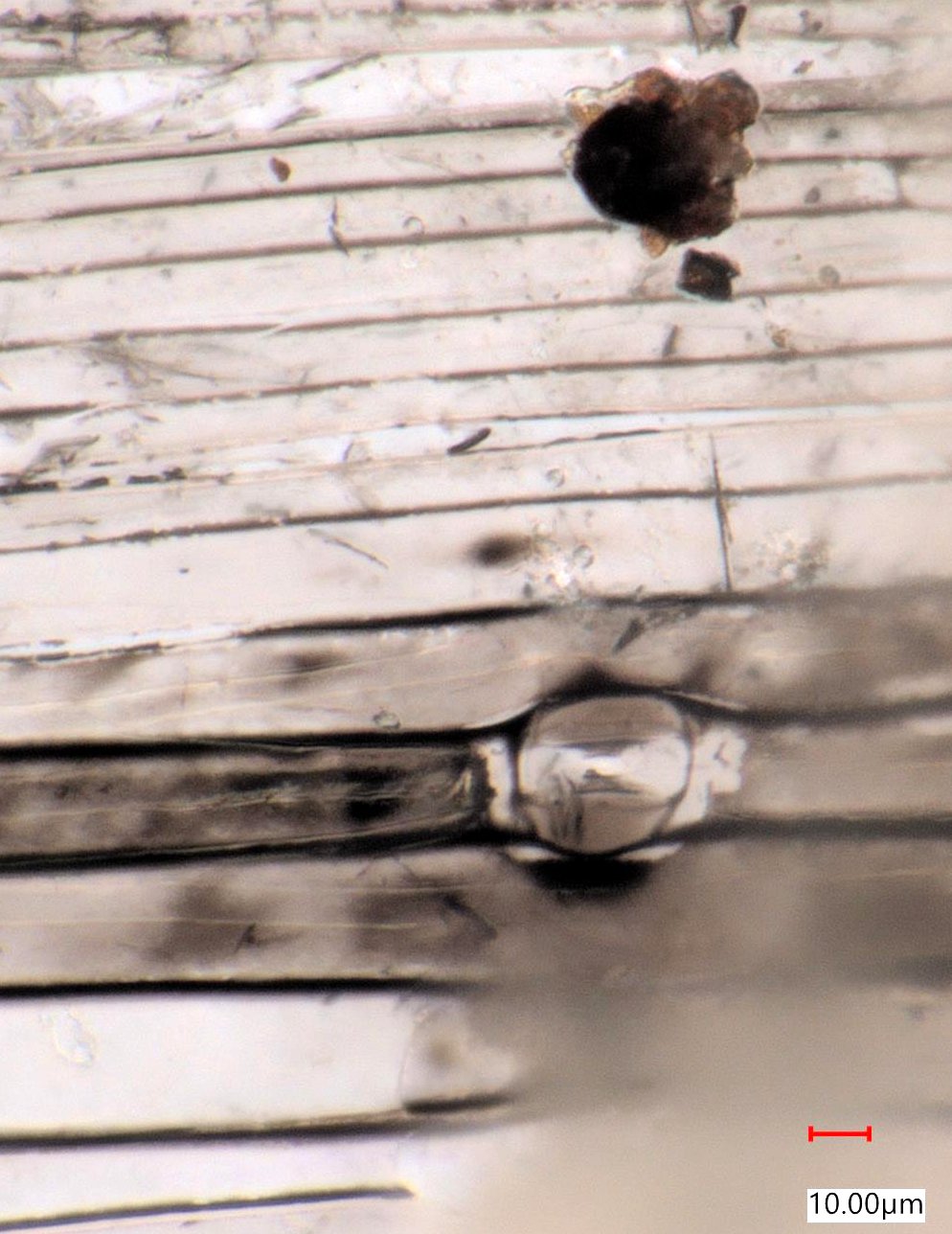Charred Grass
This is from an environmental tapelift collected in a home near a wildfire. This is ash from the stem.
Definition/Function:
This is ash of the grass stem or "culm". The surfaces of grass are often highly
silicified. This is a fragment of ash
collected on a tapelift from a home exposed to the Saddleridge wildfire. The
characteristic features of a grass stem are
shown here.
1. Shorter parenchyma cells with parallel sides. The terminations in this case are
rectangular for the most part.
2. The narrow, longer cells above center are the sclerenchymatous cells,
3. The stomata are of a slightly different shape and less common on the stem but
they are still aligned.
4. The pubescence is less frequent or absent on the stem except at nodes.
The stem tends to be more highly lignified and sometimes only thin strings of char
from the contact zone of adjacent cells are evident.
This is an invasive grass that is contributing to the frequency and severity of
wildfires in the Western United States. In the
past few years charred and ashed grasses have become a major marker for wildfire
debris in homes.
Significance in the Environment:
Characteristic Features:
Associated Particles:
References:
Ruggeberg, Markus, Ingo Burgert, and Thomas Speck, "Structural and mechanical design
of tissue interfaces in the giant reed,
Arundo donax", J. R. Soc. INTERFACE, vol. 7, pp. 499-506, 2010
Coffman, Gretchen C., Richard Ambrose, and Philip Rundel, "Wildfire promotes
dominance of invasive giant reed (Arundo donax) in
riparian ecosystems", BIOL INVASIONS, vol. 12, pp. 2723-2734, 2010.
Coates, Peter S., Mark A. Ricca, Brian G. Prochazka, Matthew L. Brooks, Kevin E.
Doherty, Travis Kroger, Erik J. Blomberg,
Christian A. Hagen, and Michael L. Casazza, "Wildfire, climate, and invasive grass
interactions negatively impact an indicator
species by reshaping sagebrush ecosystems", PNAS, vol. 113, no. 45, pp. 12745-12750,
Nov. 8, 2016.


